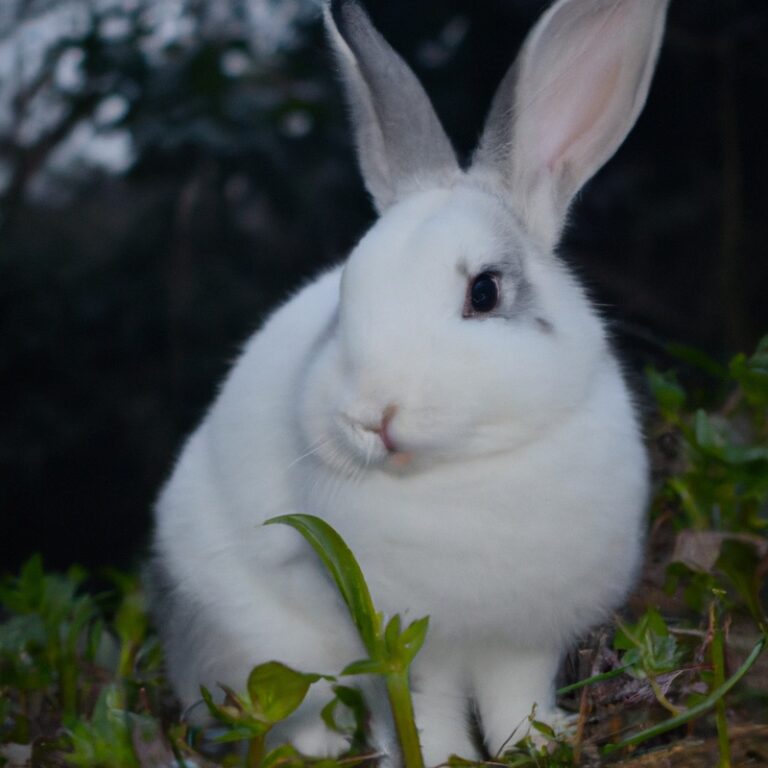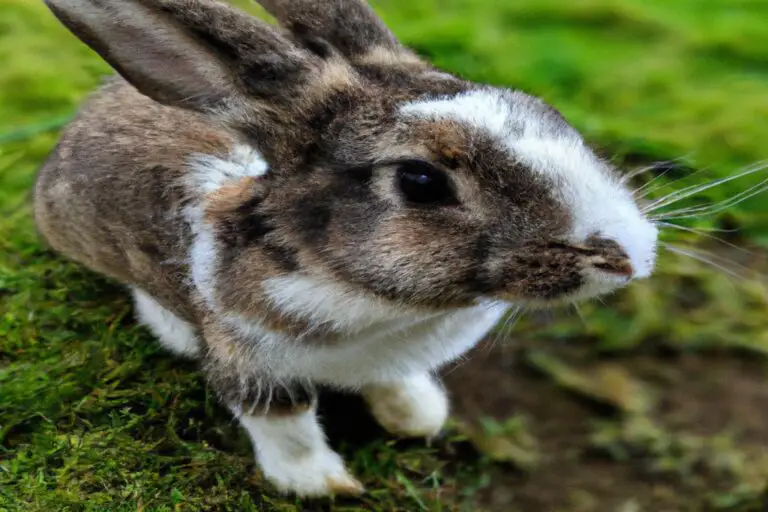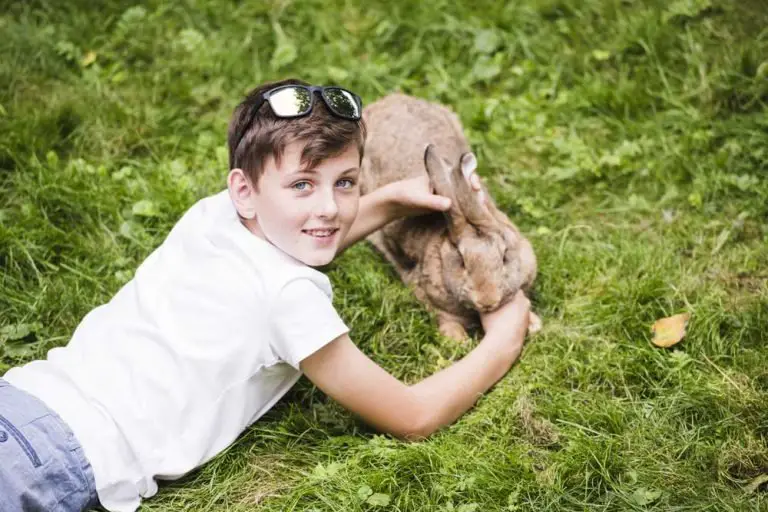How To Get Yellow Stains Off Rabbit Feet – The Ultimate Guide!
Key Takeaways:
- Regularly clean your rabbit’s feet to prevent the formation of yellow stains.
- Use gentle, pet-safe cleaning solutions to remove yellow stains from your rabbit’s feet.
- Avoid using harsh chemicals or excessive scrubbing, as this may harm your rabbit’s delicate skin.
- Consult with a veterinarian if the yellow stains persist or if you notice any other concerning symptoms.
Hey there! Are you a rabbit owner who’s been noticing some yellow stains on your furry friend’s feet? Don’t worry, you’re not alone! In this article, we’re going to dive into the wonderful world of rabbit foot stains and discover how to get rid of them effectively.
From understanding what causes these stains to exploring proper cleaning techniques, we’ll cover it all.
Oh, and we’ll also discuss how to prevent these stains in the first place. So, if you’re ready to give your rabbit’s feet the TLC they deserve, let’s hop right in!
| Methods | Effectiveness | Pros | Cons | |
| 1 | Warm Water and Soap | ✅✅✅ | Gentle on skin, readily available | May not remove deep stains |
| 2 | Baking Soda Paste | ✅✅ | Natural, can exfoliate skin | May require repeated applications |
| 3 | Hydrogen Peroxide Solution | ✅✅✅ | Effective on tough stains | Can be drying on skin |
| 4 | Vinegar and Lemon Juice | ✅✅ | Natural, can lighten stains | May have strong scent |
| 5 | Commercial Stain Removers | ✅✅✅ | Specifically formulated for stains | May contain harsh chemicals |
Understanding Yellow Stains on Rabbit Feet
Yellow stains on rabbit feet can occur for various reasons and understanding the causes behind them is important.
What Causes Yellow Stains on Rabbit Feet?
Yellow stains on rabbit feet can be caused by several factors. One common cause is urine scald, which occurs when a rabbit’s urine comes into contact with its skin and fur.
This can happen when a rabbit sits in its own urine or when its litter box is not kept clean.
Another cause is fur staining, which can happen due to the rabbit’s natural oils or exposure to environmental factors like mud or urine from other animals. Additionally, certain health conditions like liver or kidney problems can also cause yellow stains on rabbit feet.

Are Yellow Stains on Rabbit Feet Harmful?
Yellow stains on rabbit feet are generally not harmful.
They can occur due to a variety of reasons such as urine staining, old age, or even from the rabbit’s own body oils.
These stains are mostly cosmetic and do not pose any immediate health threats to the rabbit.
However, it is important to keep in mind that if the yellow stains are accompanied by other symptoms such as swelling, redness, or a foul odor, it may indicate an underlying health issue, and it is advisable to consult a veterinarian for proper diagnosis and treatment.

Proper Cleaning Techniques for Removing Yellow Stains from Rabbit Feet
To properly clean yellow stains from rabbit feet, you’ll need to follow a few key steps: preparing for cleaning, using gentle cleansers, soaking the feet, gently scrubbing the stains, and finally, drying and moisturizing the feet.
Preparation for Cleaning
Before you start cleaning the yellow stains off your rabbit’s feet, make sure you have everything you need at hand.
Here’s a quick and simple preparation guide:
- Gather the necessary supplies, such as gloves, a gentle pet-safe cleaner, a soft cloth or sponge, and warm water.
- Create a safe and comfortable cleaning area for your rabbit, using a towel or a soft surface.
- You may want to have treats or distractions ready to make the cleaning process less stressful for your furry friend.
- Take a few moments to familiarize yourself with proper cleaning techniques and ensure you’re using safe products for your rabbit’s delicate skin.
Once you’ve completed these steps, you’ll be ready to tackle those yellow stains on your rabbit’s feet with confidence.
Keep in mind that gentleness and patience are key when handling your pet during this process.

Using Gentle Cleansers
When it comes to cleaning yellow stains off rabbit feet, it’s important to use gentle cleansers.
Harsh chemicals can irritate their sensitive skin.
Instead, opt for mild, non-toxic soaps or shampoos specifically formulated for small animals.
These gentle cleansers are effective in removing stains without causing harm.
Remember to dilute the cleanser with water and use a soft cloth or sponge to gently scrub the stained area.
Rinse well and pat dry.
Soaking the Feet
Soaking the feet is one effective method to remove yellow stains from rabbit feet.
Simply fill a basin or tub with warm water and add a gentle pet shampoo.
Gently place the rabbit’s feet in the water and let them soak for a few minutes.
Use a soft cloth or sponge to gently rub away the stains.
Rinse the feet thoroughly with clean water and then pat them dry.
Remember to handle the rabbit with care and ensure the water is not too hot or cold.
Gently Scrubbing the Stains
To gently scrub the stains from your rabbit’s feet, start by preparing a mild cleaning solution using warm water and a gentle pet shampoo or dish soap. Avoid using harsh chemicals or abrasive scrub brushes, as these can irritate your rabbit’s sensitive skin.
Dip a soft cloth or sponge into the solution and gently rub the stained areas in a circular motion.
Take care to be gentle and avoid applying too much pressure. Rinse the feet thoroughly with warm water and pat dry with a clean towel.
Repeat this process as needed until the stains are removed.
Drying and Moisturizing the Feet
To dry the rabbit’s feet, gently pat them with a clean towel or use a hairdryer on the lowest setting.
Avoid rubbing the feet vigorously to prevent further irritation.
After drying, apply a small amount of rabbit-safe moisturizer or baby oil to keep the feet healthy and hydrated.
Regularly check the feet for any signs of infection or discomfort.
Preventing Yellow Stains on Rabbit Feet
To prevent yellow stains on rabbit feet, focus on ensuring a clean living environment, regular grooming and foot maintenance, providing a balanced diet, and monitoring for health issues.
Ensuring Clean Living Environment
To ensure a clean living environment for rabbits, regular cleaning and maintenance are essential. Here’s what you can do:
- Clean the cage or hutch: Remove soiled bedding and droppings daily to prevent foul odors and bacteria buildup.
- Provide fresh bedding: Replace bedding on a regular basis to keep the area clean and comfortable for your rabbit.
- Regular grooming: Brush your rabbit’s fur to remove dirt and prevent matting. This will also help reduce the chances of stains on their feet.
- Use bunny-safe cleaning products: When cleaning the cage or any accessories, opt for non-toxic cleaning solutions specifically designed for small animals.
- Keep feeding areas tidy: Remove uneaten food and spilled water promptly to prevent attracting pests and keep the area clean.
Maintaining a clean living environment for your rabbit not only promotes their health but also ensures their overall well-being.
Regular Grooming and Foot Maintenance
Regular grooming and foot maintenance are important for keeping your rabbit’s feet clean and healthy. Here are a few tips to help you with this:
- Trim the fur around the feet: Long fur around the feet can easily collect dirt and urine, leading to stains. Regularly trimming the fur will prevent this from happening.
- Check for any signs of infection: Regularly inspect your rabbit’s feet for any signs of redness, swelling, or discharge. If you notice anything unusual, consult with your veterinarian.
- Clean the feet gently: Use a damp cloth or pet-safe wipes to gently clean your rabbit’s feet. Avoid using harsh chemicals or excessive scrubbing, as this can irritate the skin.
- Provide proper flooring: Make sure your rabbit’s living area has a solid surface or a soft, clean mat to prevent their feet from getting dirty or developing sores.
By maintaining a regular grooming routine and keeping their feet clean, you can help prevent yellow stains and ensure your rabbit’s overall foot health.
Providing a Balanced Diet
A balanced diet is essential for the overall health and wellbeing of your rabbit.
To provide a balanced diet, include a variety of fresh vegetables such as leafy greens, carrots, and bell peppers.
Hay should make up the majority of their diet, as it aids digestion and keeps teeth healthy.
A small amount of pellets can be given, but be mindful of their sugar content.
Fresh, clean water should always be available.
Avoid feeding rabbits high-sugar and high-fat treats, as these can lead to health issues.
Monitoring for Health Issues
When it comes to rabbit care, monitoring for health issues is important.
Regularly checking your rabbit for any signs of illness or discomfort can help catch potential problems early on.
Keep an eye on their eating and drinking habits, as well as their behavior and activity levels.
Look out for any changes in their coat, eyes, or stool.
It’s also essential to schedule routine check-ups with a veterinarian to ensure your rabbit’s overall health and well-being.
By staying vigilant and addressing any concerns promptly, you can help your rabbit stay healthy and happy.
Frequently Asked Questions
Can I use bleach to remove yellow stains from rabbit feet?
Using bleach to remove yellow stains from rabbit feet is not recommended.
Bleach is a harsh chemical that can be harmful to the sensitive skin of rabbits.
It may cause irritation, dryness, or even chemical burns.
Instead, try using natural remedies such as a gentle soap and warm water, or a mixture of baking soda and water, to clean the stained areas.
If the stains persist, it’s best to consult a veterinarian for advice.
How often should I clean my rabbit’s feet?
You should clean your rabbit’s feet on a regular basis, ideally once or twice a week. This is important to ensure their overall hygiene and prevent the buildup of dirt or urine stains.
Additionally, regularly checking your rabbit’s feet allows you to identify any potential issues such as matted fur, sore spots, or infection.
Gently wiping their feet with a damp cloth or using a mild pet-safe cleanser can help keep their feet clean and healthy. However, be sure to consult your veterinarian for specific guidance based on your rabbit’s needs and any underlying health conditions they may have.
What if the yellow stains persist despite cleaning?
If the yellow stains on your rabbit’s feet persist despite cleaning, there are a few things you can try.
First, make sure you are using the appropriate cleaning products and following the correct cleaning method.
If that doesn’t work, you can try using a mild bleach solution or hydrogen peroxide to gently remove the stains.
Be sure to rinse thoroughly and dry the feet properly.
If the stains still won’t come off, it might be best to consult a veterinarian for further advice and guidance.
Should I be concerned if my rabbit’s feet are always yellow?
If your rabbit’s feet are always yellow, you should be concerned and seek veterinary advice. Yellow stains on rabbit feet can indicate a condition called pododermatitis, commonly known as sore hocks.
This is a painful condition that can lead to inflammation and infection.
It is crucial to address this issue promptly to ensure your rabbit’s health and well-being. Your veterinarian can provide a proper diagnosis and recommend appropriate treatment options to alleviate the discomfort and prevent further complications.
Final Verdict
Yellow stains on rabbit feet can be caused by a variety of factors, including urine, dirt, or an underlying health issue. While they may not be harmful in themselves, proper cleaning techniques are important to maintain your rabbit’s hygiene and prevent any potential discomfort or infections.
By using gentle cleansers, soaking, scrubbing, and moisturizing the feet, you can effectively remove yellow stains.
Additionally, preventive measures such as maintaining a clean living environment, regular grooming, providing a balanced diet, and monitoring for health issues can help prevent yellow stains from occurring in the first place. Remember, it is crucial to consult a veterinarian if the stains persist or if you notice any other unusual symptoms.







